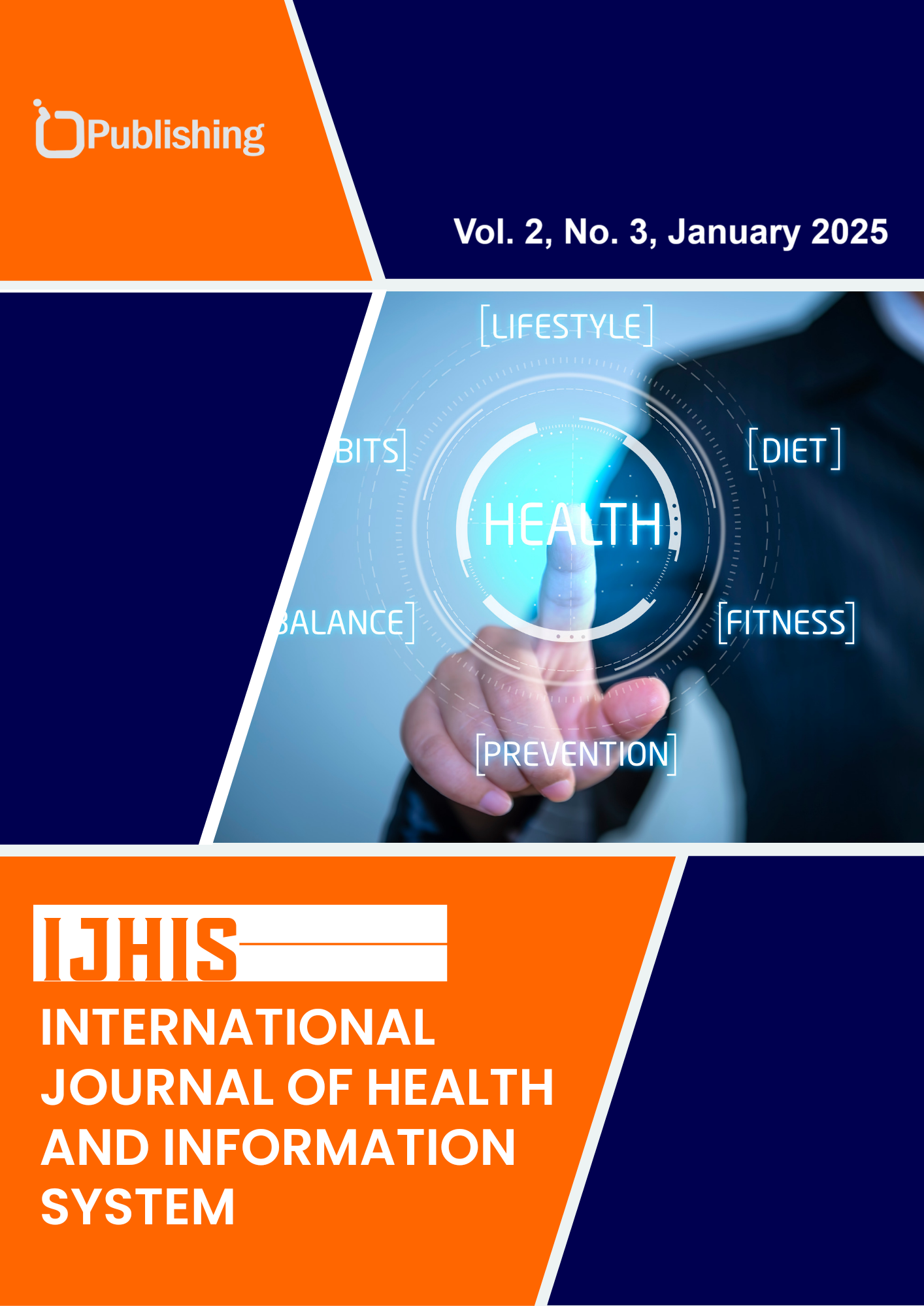The QoL of College Students and Its Impact on Stress Level: A Cross-Sectional Study
DOI:
https://doi.org/10.47134/ijhis.v2i3.51Keywords:
College Students, QoL, Quality of Life, Stress, InformationAbstract
The peak of vulnerability to behavioral and mental disorders occurs during college, making this a crucial time for development. College students have a worse quality of life (QoL) in terms of mental health compared to the general population. There is a need for information regarding QoL related to stress in students, as studies discussing QoL and stress in college students are still lacking. This study aims to analyze the relationship between QoL and stress levels in college students. A cross-sectional survey design was used in this study, involving 249 college students at higher education institutions in East Java, Indonesia. The data samples were collected based on demographic characteristics, using the QoL scale from WHOQOL-BREF and the Depression, Anxiety, and Stress Scale-21 to assess the correlation between QoL and stress levels among college students. The results showed that the stress levels of college students were classified as normal (54.6%), mild (17.3%), moderate (17.3%), severe (8.4%), and extremely severe (2.4%). A significant negative correlation was observed between all domains of QoL and stress: Physical (-0.630), Psychological (-0.658), Social Relationship (-0.564), and Environment (-0.584). These results indicate that as QoL increases, stress scores decrease. Attention should be paid to providing appropriate interventions related to college students' quality of life. Further research is needed to gather detailed information on existing QoL domains, particularly those focusing on students’ needs, current information developments, and demographic characteristics.
References
[1] R. Bruffaerts et al., “Mental health problems in college freshmen: Prevalence and academic functioning,” J. Affect. Disord., vol. 225, pp. 97–103, Jan. 2018, doi: 10.1016/J.JAD.2017.07.044.
[2] X. Gao, “Academic stress and academic burnout in adolescents: a moderated mediating model,” Front. Psychol., vol. 14, no. June, pp. 1–11, 2023, doi: 10.3389/fpsyg.2023.1133706.
[3] M. T. Jensen and E. Olsen, “Academic burnout: causes and consequences,” in Practicing Responsibility in Business Schools, Edward Elgar Publishing, 2023, pp. 164–181. doi: 10.4337/9781035313174.00019.
[4] U. K. Moksnes, M. B. Eilertsen, R. Ringdal, H. N. Bjørnsen, and T. Rannestad, “Life satisfaction in association with self‐efficacy and stressor experience in adolescents – self‐efficacy as a potential moderator,” Scand. J. Caring Sci., vol. 33, no. 1, pp. 222–230, Mar. 2019, doi: 10.1111/scs.12624.
[5] K. Jayasankara Reddy, K. Rajan Menon, and A. Thattil, “Academic Stress and its Sources Among University Students,” Biomed. Pharmacol. J., vol. 11, no. 1, pp. 531–537, Mar. 2018, doi: 10.13005/bpj/1404.
[6] S. Taj, R. Tabassum, and S. Bibi, “Impact of Stress on the Academic Performance of University Students,” Res. J. Soc. Issues, vol. 6, no. 2, pp. 314–325, 2024, doi: 10.56976/rjsi.v6i2.232.
[7] E. Astutik, S. K. Sebayang, S. I. Puspikawati, T. D. Tama, and D. M. S. K. Dewi, “Depression, anxiety, and stress among students in newly established remote university campus in Indonesia,” Malaysian J. Med. Heal. Sci., vol. 16, no. 1, pp. 270–277, 2020.
[8] M. Eskin et al., “Suicidal Thoughts, Attempts and Motives Among University Students in 12 Muslim-Majority Countries,” Psychiatr. Q., vol. 90, no. 1, pp. 229–248, 2019, doi: 10.1007/s11126-018-9613-4.
[9] M. A. Bujang et al., “Measuring population health and quality of life: Developing and testing of the significant quality of life measure (SigQOLM),” Heliyon, vol. 9, no. 12, p. e22668, 2023, doi: 10.1016/j.heliyon.2023.e22668.
[10] K. Mehmood, A. Suhail, P. Kautish, M. M. Hakeem, and M. Rashid, “Turning Lemons into Lemonade: Social Support as a Moderator of the Relationship Between Technostress and Quality of Life Among University Students,” Psychol. Res. Behav. Manag., vol. 17, no. February, pp. 989–1006, 2024, doi: 10.2147/PRBM.S448989.
[11] Í. J. S. Ribeiro, R. Pereira, I. V. Freire, B. G. de Oliveira, C. A. Casotti, and E. N. Boery, “Stress and Quality of Life Among University Students: A Systematic Literature Review,” Heal. Prof. Educ., vol. 4, no. 2, pp. 70–77, Jun. 2018, doi: 10.1016/j.hpe.2017.03.002.
[12] A. L. P. da Rodrigues, L. Cerdeira, M. L. Machado-Taylor, and H. Alves, “THE IMPORTANCE OF DEVELOPING STUDENTS’ TECHNOLOGICAL SKILLS IN HIGHER EDUCATION FOR THEIR FUTURE QUALITY OF LIFE,” Mar. 2021, pp. 3945–3949. doi: 10.21125/inted.2021.0807.
[13] J. D. Sinaga, M. Sarif, and S. A. Hassan, “Indonesia and Malaysia Students’ Quality of Life After the Covid-19 Pandemic: A Mixed Methods Study,” J. Kaji. Bimbing. dan Konseling, vol. 8, no. 2, pp. 102–116, Mar. 2023, doi: 10.17977/um001v8i22023p102-116.
[14] H.-M. Li and B.-L. Zhong, “Quality of life among college students and its associated factors: a narrative review,” AME Med. J., vol. 7, pp. 38–38, Dec. 2022, doi: 10.21037/amj-22-96.
[15] N. A. Kloping, T. Citraningtyas, R. Lili, S. M. Farrell, and A. Molodynski, “Mental health and wellbeing of Indonesian medical students: A regional comparison study,” Int. J. Soc. Psychiatry, vol. 68, no. 6, pp. 1295–1299, Sep. 2022, doi: 10.1177/00207640211057732.
[16] J. B. Prihanto, E. S. Wahjuni, F. Nurhayati, R. Matsuyama, M. Tsunematsu, and M. Kakehashi, “Health Literacy, Health Behaviors, and Body Mass Index Impacts on Quality of Life: Cross-Sectional Study of University Students in Surabaya, Indonesia,” Int. J. Environ. Res. Public Health, vol. 18, no. 24, p. 13132, Dec. 2021, doi: 10.3390/ijerph182413132.
[17] W. S. S. Pandia, A. O. Suryani, and I. Irwanto, “Post-Covid Adaptation: Students’ Mental Health and Higher Education System in Indonesia,” Int. J. Business, Econ. Soc. Dev., vol. 4, no. 4, pp. 262–267, Nov. 2023, doi: 10.46336/ijbesd.v4i4.526.
[18] R. Parsaei, H. Roohafza, A. Feizi, M. Sadeghi, and N. Sarrafzadegan, “How different stressors affect quality of life: An application of multilevel latent class analysis on a large sample of industrial employees,” Risk Manag. Healthc. Policy, vol. 13, pp. 1261–1270, 2020, doi: 10.2147/RMHP.S256800.
[19] Y. Ramesh Kadam, S. Raguel Quraishi, V. Baliram Waghachavare, R. Vishnupant Dhobale, A. Suresh Mane, and A. Dilip Gore, “A cross-sectional study of students’ perception of educational environment and its determinants using the Dundee Ready Education Environment Measure scale,” pp. 53–59, 2020, doi: 10.4103/bjhs.bjhs.
Downloads
Published
How to Cite
Issue
Section
License
Copyright (c) 2024 Rinda Nurul Karimah, Prawidya Destarianto, Dhyani Ayu Perwiraningrum, Efri Tri Ardianto

This work is licensed under a Creative Commons Attribution-ShareAlike 4.0 International License.







